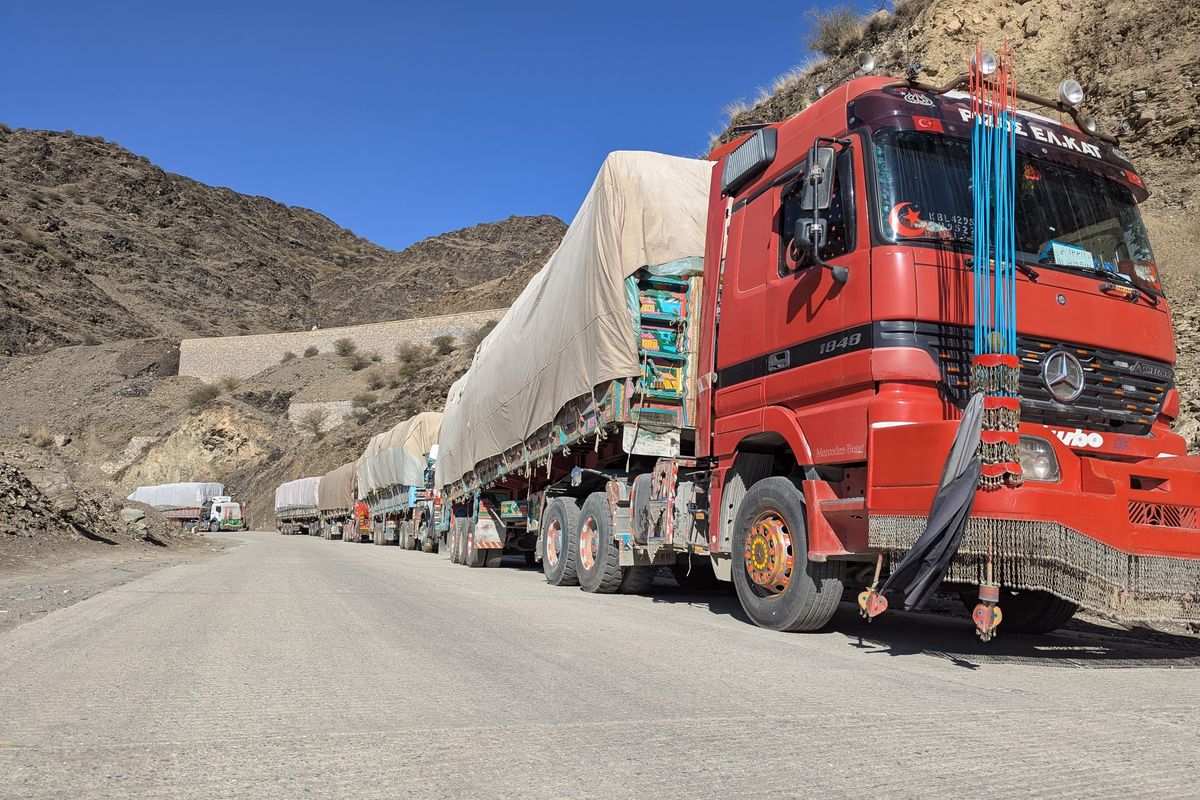Anti-smuggling crackdown turns Afghanistan trade route into a ghost highway
Transit trade declines by 84% after border crackdown

Shahzad Raza
Correspondent
Shahzad; a journalist with 12+ years of experience, working in Multi Media. Worked in Field, covered Big Legal Constitutional and Political Events in Pakistan since 2012. Graduate of Islamic University Islamabad.

Pakistan’s aggressive campaign against smuggling has transformed its historically busy transit trade route with Afghanistan into a near-deserted highway, slashing cross-border movement by 84%. This decline comes even as exports to its war-torn neighbor continue to rise.
While Pakistan’s exports to Afghanistan surged 33% during July–March FY2024-25 to $1.05 billion, transit cargo bound for Afghanistan via Pakistan plummeted from $7.48 billion to just $1.21 billion in the year following administrative measures.
The biggest shock comes from “forward cargo”—goods imported into Afghanistan through Pakistan—which nosedived by 86% after Pakistan imposed tighter checks and documentation requirements in November 2023. The move aimed to curb rampant smuggling of fuel, food, and consumer goods that frequently re-entered Pakistan illicitly.
Meanwhile, reverse cargo—Afghan exports through Pakistan—also saw a sharp decline, falling 50% year-on-year, reflecting tighter scrutiny and higher transportation costs.
“The smuggling corridor has dried up,” a senior customs official said, speaking on condition of anonymity. “What used to be a leaky pipeline is now a sealed valve.”
More Exports, Fewer Trucks
Although Pakistan’s legitimate exports to Afghanistan have risen sharply—particularly in sugar (a jaw-dropping 4,333% increase), cement, and pharmaceutical products—the collapse of transit trade signals a fundamental shift in cross-border commerce. Once a major entry point for goods from Dubai and beyond, Pakistani ports are now witnessing far fewer Afghan-bound containers.
During July–March, transit trade plunged 64% to $836 million, compared to $2.33 billion in the same period last year. In March alone, the year-on-year drop was 4%, although month-on-month data showed a slight 6% rebound.
What’s Driving the Crackdown?
The sharp curbs are part of Pakistan’s broader campaign to plug leaks in its economy, tighten tax compliance, and meet International Monetary Fund (IMF) targets. For years, the Afghan transit route was a hotspot for tax evasion and parallel imports. Analysts believe this shift is not just economic—it’s political.
“Pakistan is signaling to Kabul and the global community that it’s serious about border discipline,” said a senior regional trade expert. “But it comes at the cost of trade volume and regional integration.”
Even as transit trade suffers, Pakistan’s imports from Afghanistan are rising—up 16% to $524 million—driven by demand for cotton, spices, and cereals. However, there’s a catch: March 2025 saw a sharp 37% year-on-year drop in overall trade, hinting at instability or seasonal volatility. Some observers fear the crackdown may push trade into informal or unofficial channels again, potentially undermining the gains.










Comments
See what people are discussing